Nanyang Artists
Georgette Chen, Singapore Waterfront. (1958). Collection of National Museum of Singapore. Digital image retrieved from National Library Online.
Originally used by the Chinese as a trading denomination for the Southeast Asian region, “Nanyang” literally translates as “South Seas.”1 Terms such as “Nanyang style” and “Nanyang art” are often used in Singapore’s art historical discourse, and one of the first attempts to define these terms was made by art historians Redza Piyadasa and T.K Sabapathy in 1979, as part of a seminal exhibition of Nanyang artists’ works.
Piyadasa characterises the development of Nanyang art as an extension of developments in China, which includes a change of attitude towards Western-style art and aesthetics. He suggests that the significance of the first-generation Nanyang artists “lies in the fact that they were responsible for bringing to British Malaya a sophistication and a cosmopolitanism that had hitherto been absent within the local art scene.” 2
Many Nanyang artists were Chinese who left China during the civil war. Sabapathy observes that with their training in both Western and Chinese art, these artists often adopted an experimental approach by “using styles and techniques derived from two sources: Chinese pictorial traditions, and the School of Paris.”3 This synthesis of artistic techniques was not bound by mediums and Nanyang artists produced both ink and oil works.4
Nanyang artists also strove to portray the local environment and people in their art. Rather than a specific geographical location, they approached the idea of the “local” as a fluid conception,5 looking “at their surroundings with a view towards producing motifs in order to fulfil pictorial needs.”6 This interest extends beyond Singapore and Malaya to other parts of Southeast Asia, evidenced by the landmark 1952 Bali trip undertaken by Liu Kang, Chen Chong Swee, Chen Wen Hsi, and Cheong Soo Pieng.
Many Nanyang artists were students or teachers at the Nanyang Academy of Fine Arts (NAFA) but not all Nanyang artists were formally associated with NAFA, as some of them undertook private studies with the NAFA teachers.7 In addition to the four artists mentioned above, artists such as Lim Hak Tai, who was the founding principal of NAFA, and Georgette Chen have also been included among the first generation of Nanyang artists.
Piyadasa identifies 1938 to 1965 as the golden period of the Nanyang art movement,8 while Ong points out that the Nanyang art reached its maturity in the 1950s to 1960s.9 Even though its prominence was gradually overshadowed by other artistic concerns such as Social Realism in later years, the Nanyang style remains an important chapter in any study of Singapore’s art history.
Books
| Books | Description |
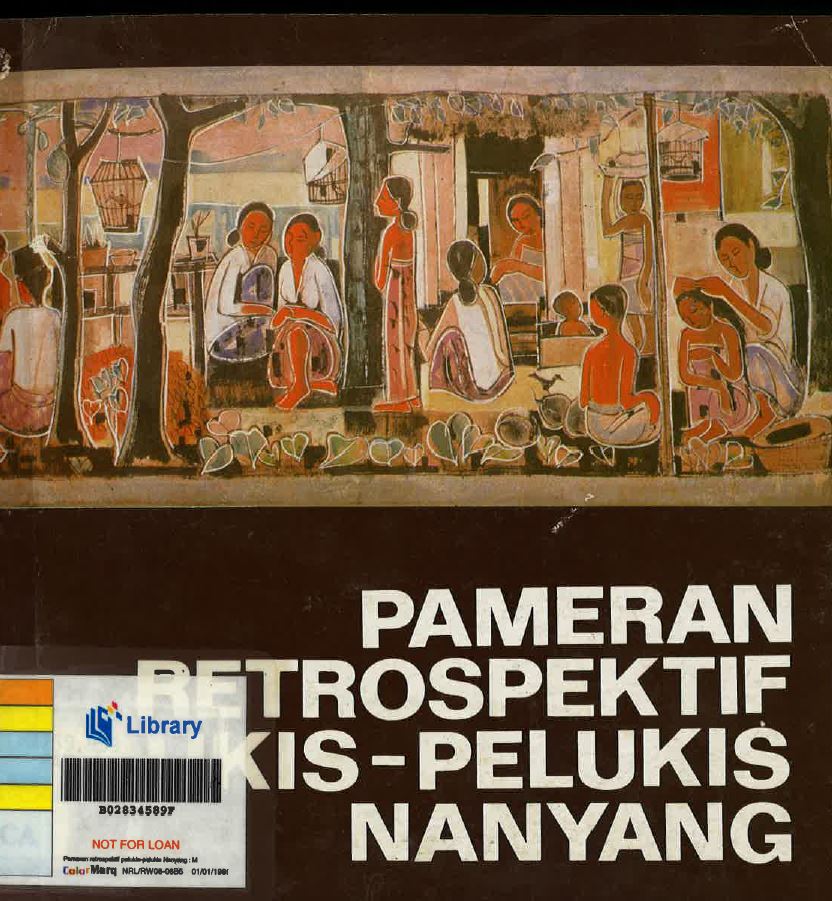
|
Muzium Seni Negara (1979). Pameran retrospektif pelukis-pelukis
Nanyang. Kuala Lumpur: Muzium Seni Negara. (Call no.: RSING Malay 759.959 PAM) Written in Malay and English, this catalogue highlights a seminal exhibition at the Muzium Seni Negara in Malaysia in 1979 and includes essays by art historians Redza Piyadasa and T.K. Sabapathy on the Nanyang art movement. The practices of artists such as Chen Chong Swee, Chen Wen Hsi, Cheong Soo Pieng, Georgette Chen, and Lim Hak Tai are also briefly discussed. |
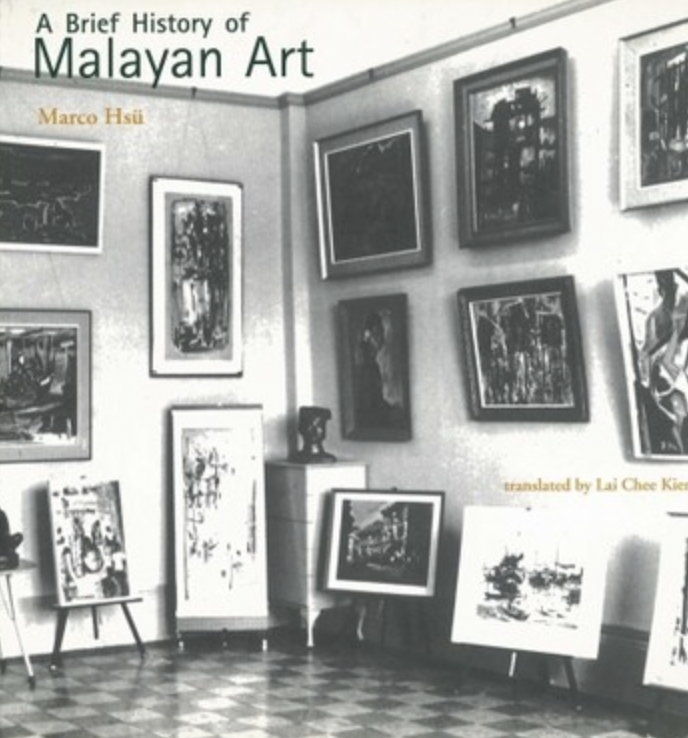
|
Hsu, M.C.F. (1999). A brief history of Malayan art. Singapore:
Millennium Books. (Call no.: RSING 709.595 HSU)
Translated from Mandarin to English, this work discusses the various factors that have shaped the art scene in present-day Singapore and Malaysia. It traces the area’s art, personalities, events, and organisations from the time of the early settlers. Topics covered include the spread of Islam, the transmission of Western cultures, and the nurturing of painting. |
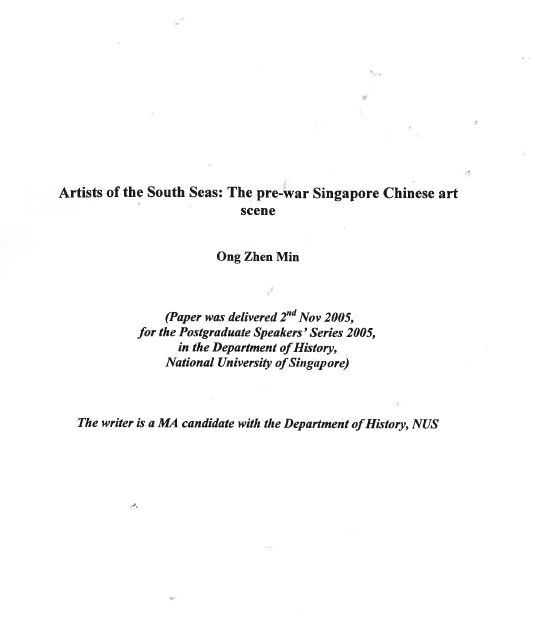
|
Ong, Z.M. (2005). Artists of the South Seas: The pre-war Singapore
Chinese art scene. Singapore: Ong Zhen Min, National University of
Singapore, Department of History. (Call no.: RSING 709.5957 ONG)
This is a paper delivered on November 2nd, 2005 at the National University of Singapore Department of History’s Postgraduate Speakers’ Series. It discusses immigrant art activities in 1920s and 1930s Singapore and the beginnings of the Nanyang art style. |

|
Singapore Art Museum (1994). From ritual to romance: Paintings
inspired by Bali. Singapore: Singapore Art Museum. (Call no.: RSING 759.9598 SIN)
This is a catalogue of works inspired by Bali, and painted by Balinese artists, other Indonesian artists, foreign artists, and 4 Singapore artists – Chen Chong Swee, Chen Wen Hsi, Cheong Soo Pieng, and Liu Kang. Three articles, with translations in Malay, discuss the inspiration for the arts in Bali and Bali as a visual source in Singapore art. |
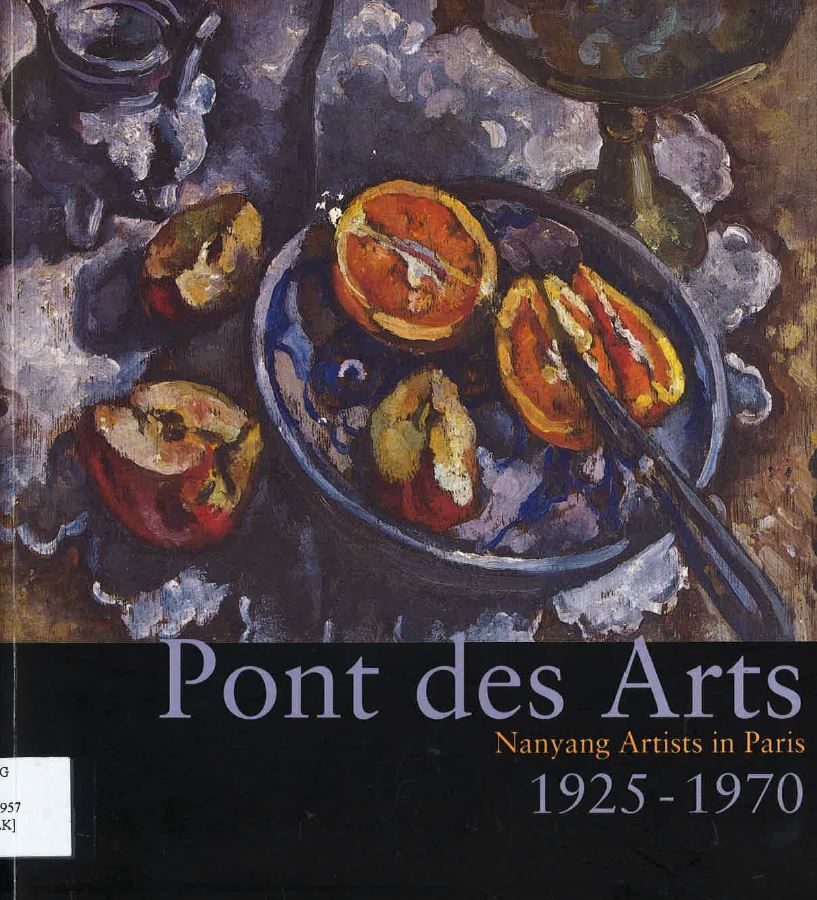
|
Singapore Art Museum (1994). Pont des Arts: Nanyang artists in Paris, 1925-1970. Singapore: Singapore Art Museum. (Call no.: RSING 759.95957 SIN)
This is an exhibition catalogue with essays analysing the effects of the Parisian art movements on the oeuvre of the Nanyang artists. |
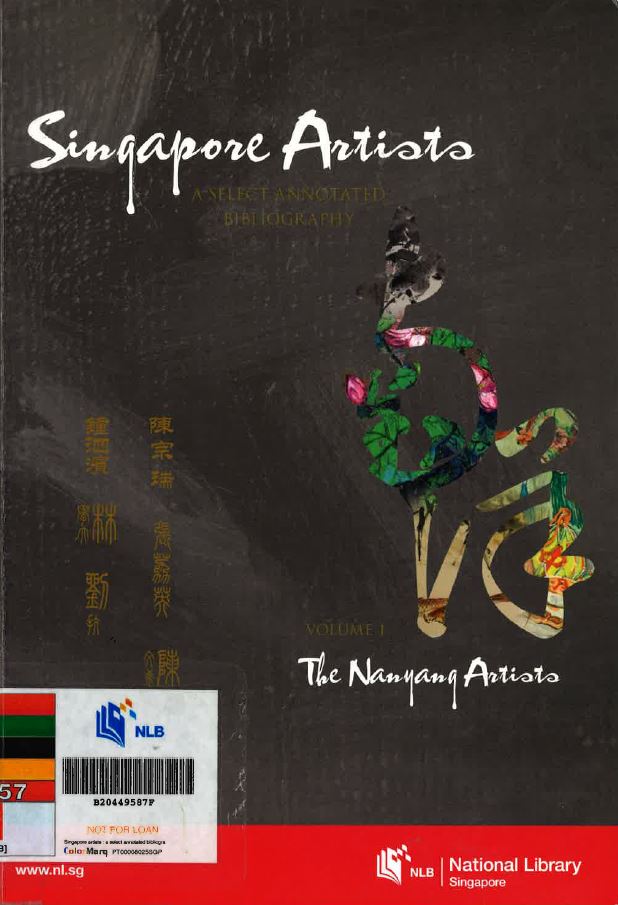
|
Yeo, A., Gee, M.M., Balagopal, R., Tay, C.B., Cheng, T.Y., & Anuar, M. (Eds.). (2009). Singapore artists: A select annotated bibliography (Volume 1: The Nanyang artists). Singapore: National Library Board. (Call no.: RSING 016.7095957 LEE -[LIB])
This is an extensive annotated compilation of resources on Nanyang artists in the collection of the National Library Board Singapore. There are specific sections dedicated to the following artists: Cheng Chong Swee, Georgette Chen, Chen Wen Hsi, Cheong Soo Ping, Lim Hak Tai, and Liu Kang. |
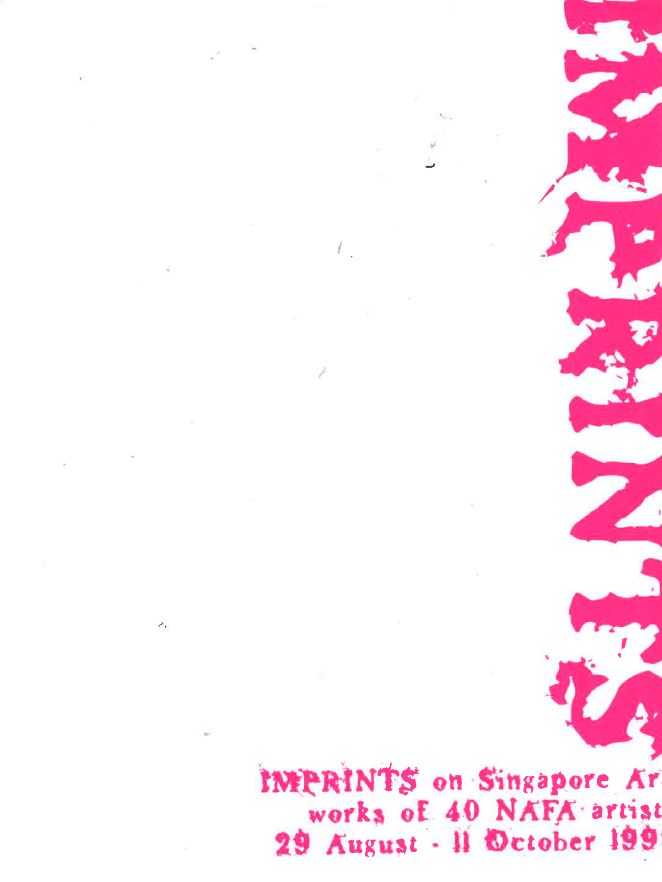
|
Singapore Art Museum. (1998). Imprints on Singapore art: Works of 40 NAFA artists. Singapore: Singapore Art Museum. (Call no.: RSING q709.5957 IMP)
Published in conjunction with an exhibition of 40 artists who were graduates or lecturers of the Nanyang Academy of Fine Arts (NAFA), this catalogue includes essays on NAFA as well as the historical development of art in Singapore. |
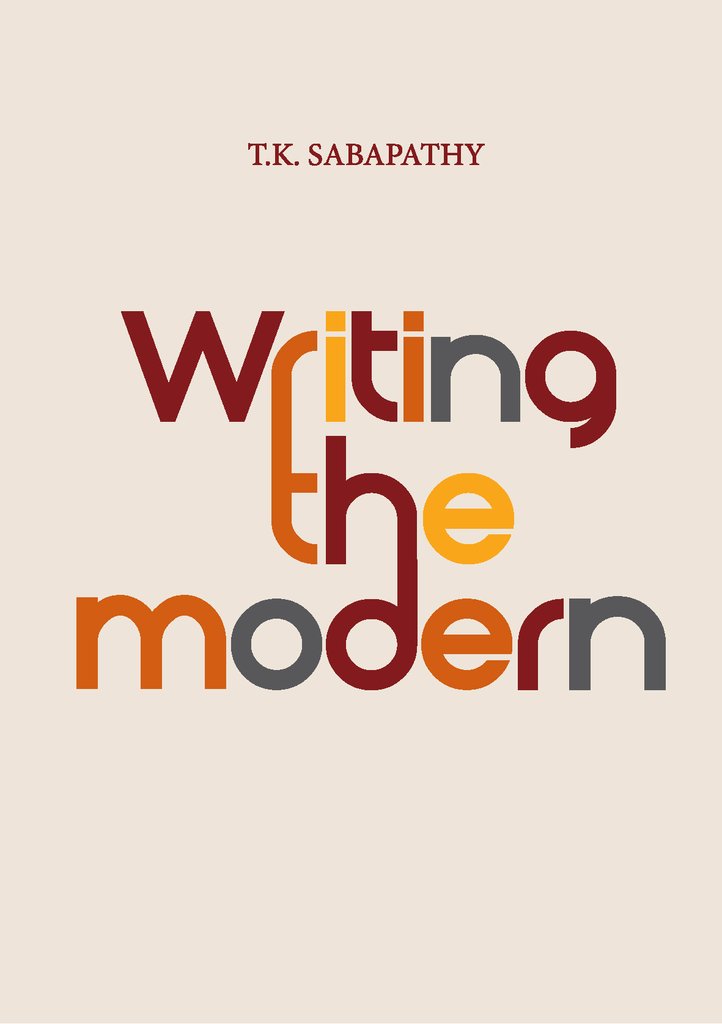
|
Sabapathy, T.K. (2018). Writing the modern: Selected texts on art & art history in Singapore, Malaysia & Southeast Asia 1973-2015. Singapore: Singapore Art Museum. (Call no.: 709.59 SAB)
Art historian T.K. Sabapathy has written extensively on Singapore art for several decades, covering a wide range of topics, including Nanyang artists and the Nanyang style. This anthology brings together his writings across different genres such as exhibition reviews, interviews, papers, and personal correspondences. |

|
Low, S.W. (Ed.). (2015). Siapa nama kamu? Art in Singapore since the 19th century. Singapore: National Gallery Singapore. (Call no.: 709.5957074 SIA)
This catalogue was published to accompany the inaugural exhibition *Siapa Nama Kamu?* at the National Gallery Singapore in 2015 and features curatorial essays on various topics in Singapore art, including Ong Zhen Min’s “Nanyang Reverie.” |
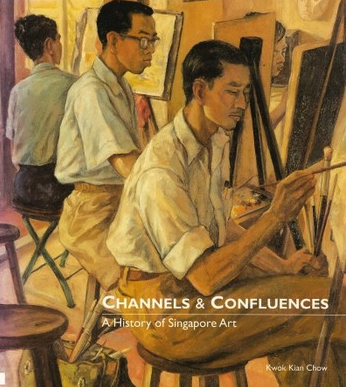
|
Kwok, K.C. (1996). Channels & confluences: A history of Singapore
art. Singapore: Singapore Art Museum. (Call no.: RSING 709.5957 KWO)
A fully illustrated book which outlines the history of the visual arts in Singapore from the twentieth century, this study highlights many historical and aesthetic themes and issues which are vital to the understanding of the development of the visual arts in Singapore. |

|
Low, S.W., & Flores, P.D. (Eds.). (2017). Charting thoughts: Essays on art in Southeast Asia. Singapore: National Gallery Singapore. (Call no.: 709.59 CHA)
This compilation includes two essays relating to the Nanyang artistic style in Singapore: Kevin Chua’s “When Was Modernism? A Historiography of Singapore Art” and Seng Yu Jin’s “Lim Hak Tai points a Third Way: Towards a Socially Engaged Art by the Nanyang Artists, 1950s-1960s.” |
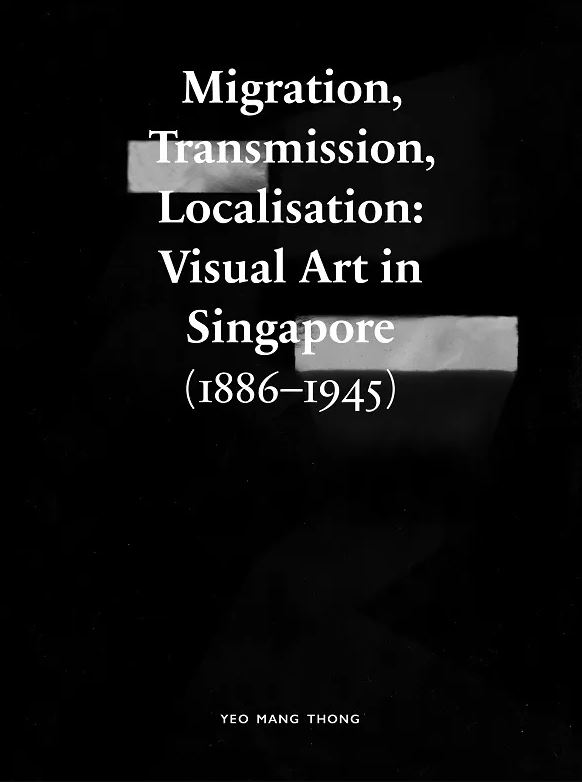
|
Yeo, M.T. (2019). Migration, transmission, localisation: Visual art in Singapore (1886-1945). Singapore: National Gallery Singapore. (Call no.: 709.5957 YAO)
Originally in Chinese, this translated volume contains essays by Singapore scholar Yeo Mang Thong on the pre-war art scene in Singapore, including the Nanyang artists and their activities. |
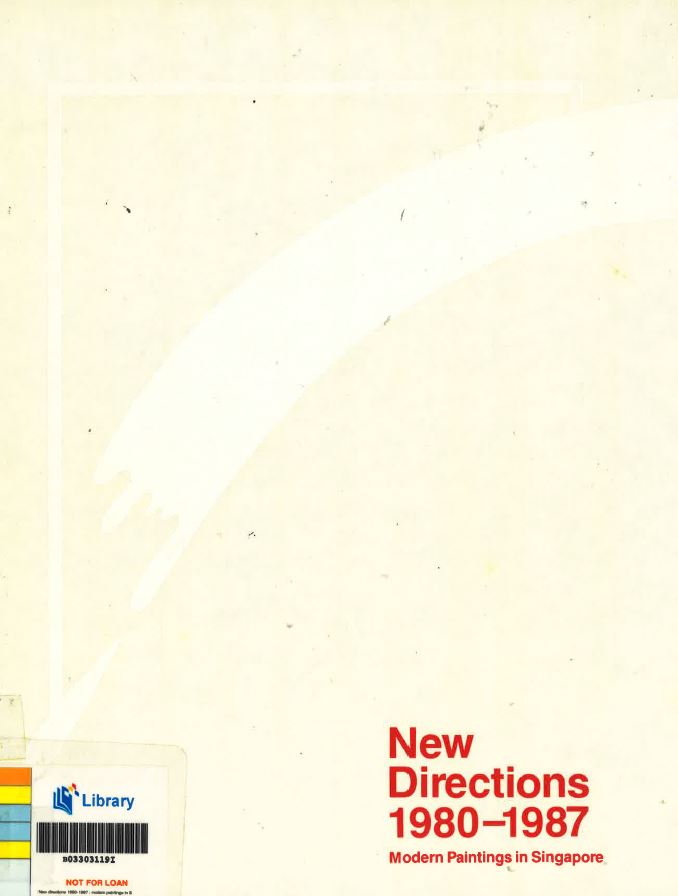
|
Thang, K.H. (1987). New directions 1980-1987: Modern paintings in
Singapore. Singapore: Horizon Publishing. (Call no.: RSING 759.95957 NEW)
This title contains a six-page essay by T.K. Sabapathy on the Nanyang artists, with critical analysis of certain artworks. |
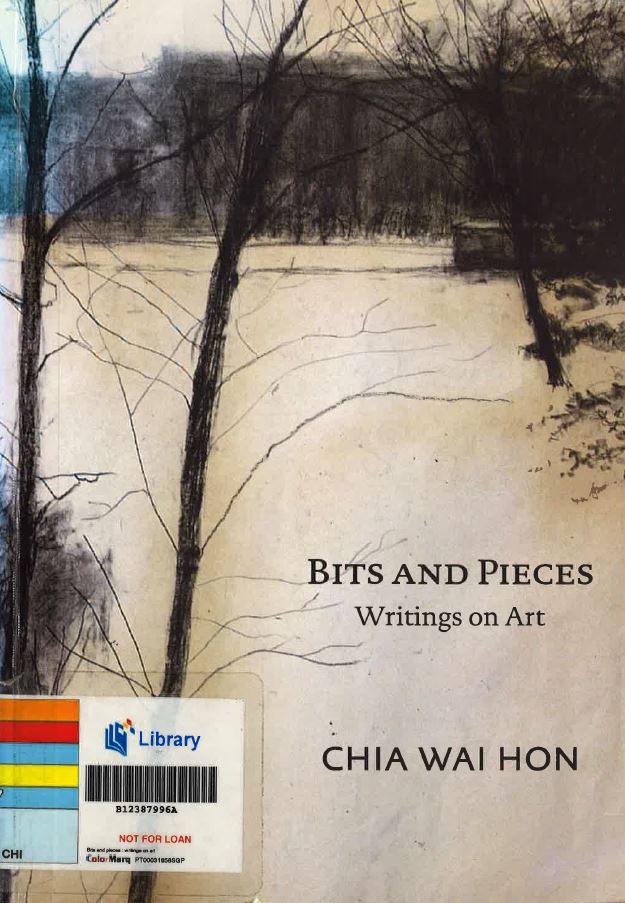
|
Chia, W.H. (2002). Bits and pieces: Writings on art. Singapore:
Contemporary Asian Arts Centre. (Call no.: RSING 709.5957 CHI)
This book compiles reviews of art exhibitions, broadcasted over Radio Singapore during the period 1970 to 1972. Coverage includes writings and discussions on art, artists, art education, and critical issues, chiefly concerning Singapore but also Asia as well. |
Articles
Sabapathy, T.K. (February 1983). Modern art in Singapore: Pioneers and premises. Asian Culture, 1, 41-48. Call no.: RCLOS 950.05 AC
- This article assesses the elements behind “Nanyang artist, Nanyang movement, Nanyang style”- terms that have been frequently used in discussions on modern art in Singapore.
Sabapathy, T.K. (1995). Bali revisited. The Arts, April 1995, 1(1), 12-18. Call no.: RSING 700.5 A
- The author examines Chen Chong Swee, Chen Wen Hsi, Cheong Soo Pieng, and Liu Kang’s landmark 1952 Bali trip, with a critical appraisal of some of the artists’ works.
Sabapathy, T.K. (1980, October 4). Traditions and modernity: The Nanyang artists I. The Straits Times, Section Two, p.6-7.
- A long article on the elements of the Nanyang style of painting, how it evolved, and the role of the Nanyang Academy of Fine Arts as a place where modern art in Malaya was shaped.
Sabapathy, T.K. (1980, October 6). Pictorial vocabulary: The Nanyang artists II. The Straits Times, Section Two, p.8-9.
- This article details further the techniques used in the Nanyang style of painting.
Sabapathy, T.K. (1982, January 1). Scroll met easel. Straits Times Annual.
- The author discusses the main characteristics of Nanyang art and how various artists integrate Western and Chinese artistic techniques.
Sabapathy, T.K. (1981, December 6). Nanyang artists and their style. The Straits Times.
- This article provides an overview of the key Nanyang artists and the 1952 Bali trip.
Beginner’s guide to the Nanyang school of art. (2006, November 30). The Straits Times.
- This article briefly summarises the origins and artists involved in the Nanyang school of art.
Like Gauguin, they searched the Southern Seas to find a new art. (1982, January 1). Straits Times Annual.
- The characteristics of Chinese painting traditions and the School of Paris are introduced in this article in relation to the Nanyang style.
Cheah, U.H. (2013, August 23). An insight into Singapore’s Nanyang art period. Business Times.
- This article introduces the exhibition at the NUS Museum titled Between Here and Nanyang: Marco Hsu’s Brief History of Malayan Art. It provides a brief overview of Marco Hsu’s book and the Nanyang style of art.
Kwok, K.C. (undated). The Bali Field Trip, Liu Kang, Chen Chong Swee, Chen Wen Hsi and Cheong Soo Pieng. Retrieved 2021, November 1.
- In this article, the author looks at the 1952 Bali trip which is frequently mentioned in relation to the Nanyang style. Images of artworks inspired from the trip are also included in the article.
Yeo, A. (2006, April). Singapore art, Nanyang style. BiblioAsia 2(1), 4-11.
- The author provides an overview of the Nanyang style and briefly looks at the artists associated with the Nanyang style.
Martin, M. (2010, March 16). Beyond Bali. TODAY.
- The author looks at the relevance of the Nanyang style in contemporary context, in conjunction with a group exhibition of works by alumni from the Nanyang Academy of Fine Arts.
Academic writing
Tan, M.K. (1997). The evolution of the Nanyang art style: A study in the search for an artistic identity in Singapore, 1930-1960 (Master’s thesis, Hong Kong University of Science and Technology). (Call no.: RSING q709.5957 TAN; also accessible here.)
- This thesis studies the reasons and events behind the evolution of the Nanyang Art Style in Singapore, from 1930 to 1960. It is divided into two parts: the first covers the history of the country and the other analyses the art style itself.
Teo, L.K. (2011). Defining the Nanyang style in painting (Master’s thesis, LASALLE College of the Arts, Singapore). (Call no.: 759.95957 TEO)
- This thesis attempts to define the Nanyang style in painting by applying the scholarships of Meyer Schapiro and Judith Genova on the subject of style.
Chua, E.K. (1995). The emergence of the Nanyang style and its role in the regionalism of ASEAN countries (Master’s thesis, University of Western Sydney). (Call no.: 709.5957 CHU)
- This thesis, written by Singapore artist Chua Ek Kay, examines the significance and evolution of the Nanyang style in relation to Singapore’s cultural identity within the broader Southeast Asian and ASEAN context.
Low, Y. (2015). Becoming professional artists in postwar Singapore and Malaya: Developments in art during a time of political transition. Journal of Southeast Asian Studies, 46(3), 463–484. Retrieved 2021, November 8 via NLB’s eResources website. (myLibrary ID is required to access this article.)
- Low studies the context of art production and education, and its relation to nation-building strategies to construct a Malayan culture, in Singapore and Malaysia after the second World War.
Videos
National Library Board. (2018, June 28). From Nanyang to Modern: Singapore Painting from the 1950s to the 1970s (video). YouTube.
- Art historian Jeffrey Say highlights some of the competing strands and tendencies of painting from the 1950s to 1970s in Singapore, such as the Nanyang style, abstraction, social realism, watercolour, and ink.
National Library Board. (2019, March 19). Singapore Artists (video). YouTube.
- Using archival footage from the National Archives of Singapore, this clip features the studios of early artists including Nanyang artists such as Cheong Soo Pieng and Chen Wen Hsi.
This guide provides a selection of resources on Nanyang artists and the Nanyang art movement and is not meant to be exhaustive. You can also visit catalogue.nlb.gov.sg to search for more materials on specific artists. This resource guide was prepared in November 2021 by Luke Chua, Senior Librarian at the National Library. The information in this resource guide is valid as at November 2021 and correct as far as we are able to ascertain from our sources.
All Rights Reserved. National Library Board Singapore 2021.
References
-
Ong, Z.M. (2015). “Nanyang Reverie.” In Siapa nama kamu: Art in Singapore since the 19th century. Singapore: National Gallery Singapore, p. 42. ↩
-
Piyadasa, R. (1979). The Nanyang Academy of Fine Arts. In Pameran retrospektif pelukis-pelukis Nanyang. Kuala Lumpur: Muzium Seni Negara, p. 28. ↩
-
Sabapathy, T.K. (1979). The Nanyang artists: Some general remarks. In Pameran retrospektif pelukis-pelukis Nanyang. Kuala Lumpur: Muzium Seni Negara, p. 44. ↩
-
Ong. p. 45-46. ↩
-
Ong. p. 46. ↩
-
Sabapathy. p. 44. ↩
-
Piyadasa. p. 7. ↩
-
Piyadasa. p. 6. ↩
-
Ong. p. 51. ↩


